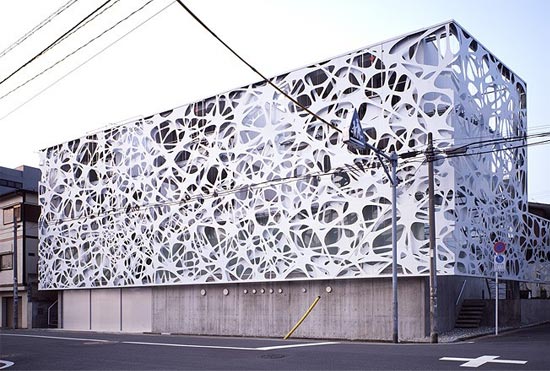The psychology behind the interior design of a space is rigorously gaining momentum as a key consideration due to the high level of influencing power that understanding it can hold. If this effect is possible on interiors, it stands to reason the same elements can be utilised on building exteriors.
Through space, design, colour and a number of other factors, architects are able to create built environments that affect that mood, health and the overall attitude of those who enter them.
There are a number of considerations that go into understanding a level of the psychology of exterior architecture, but two key elements are perception and transition.
Perception
The exterior architecture of a building is essentially its skin. It is the first impression individuals have of a site, and due to interlinking structural supports, it sets the foundation in terms of both design and construction for the interior forms.
While these are important in terms of structural design, it is the ‘eye-catching’ nature of the façade that is particularly important in how individuals actually perceive a building.
In his article ‘Architecture of the Blink’, Geoff Manaugh takes the idea of ‘blink-spots’, a theory typically associated with film, and transfers it to how we actually see the buildings in front of us. The idea of blink-spots is that when visualizing something, such as a film, individuals tend to blink in unison, thus unconsciously interpreting what they deem to be too important to miss, and what is frankly, ‘blinkable’.
Manaugh’s key point is that if this translates across to architectural forms, individuals may be perceiving the buildings in the same way, uniformly missing what were thought to be subtle design features. This could go some way in explaining why some great design concepts are not aesthetically pleasing in their built form.
Transition
As people move from a building’s exterior to its interior, they are likely to blink more or lose focus, thus missing influential design transitioning tools that create a building that has ‘flow’ or translates from the outside in.
The time spent entering a building’s interior has been labeled as a ‘blink-safe’ space, as our minds are preparing for the visual onslaught that awaits inside, our eyes relax and allow us to blink more in preparation.
However, this could create a gap between the perception of outside and inside spaces, thus losing appeal and the real sense of what has been created.
Creating a Focus
In order to combat what are arguably two detrimental forces, Sensing Architecture’s ‘What Gets the Most Visual Attention in your Architecture’ has introduced the idea of acclimatising focal points. While creating spaces that are visually overwhelming and have a design focus that flows right through the structural form may be seen as eye-catching architecture, it may actually not be the most effective way to create an atmosphere and show off the design elements of a building.
Instead, by creating focus design points – design feature points that have some kind of stimulus that draw the eye – throughout a space, it is possible to lead an individual through that space without overwhelming them or offering them so much in the way of the visual experience that important moments, features and critical design points are missed.
In cases when the eye is purposely stimulated, blinking enables the the second look process, where our eyes, which have been refreshed from the former blink taken in anticipation for the stimulus, may take in new elements that we may have otherwise missed.
Spaces that take these design elements into consideration then create a space that ‘maximises blink appeal’.
Cities are filling up with buildings, and especially facades, that are incredibly eye-catching. It has been traditionally thought that the more outlandish or unique the facade, the greater its architectural success. However, instead of designing larger and more grandiose buildings, by designing in smarter ways and taking into consideration the way in which design elements can be most strongly perceived. This offers the promise of appealing to people’s architectural senses as a whole, allowing for a design’s true sense to be communicated without having the viewers miss any details.
By Emily D’Alterio






